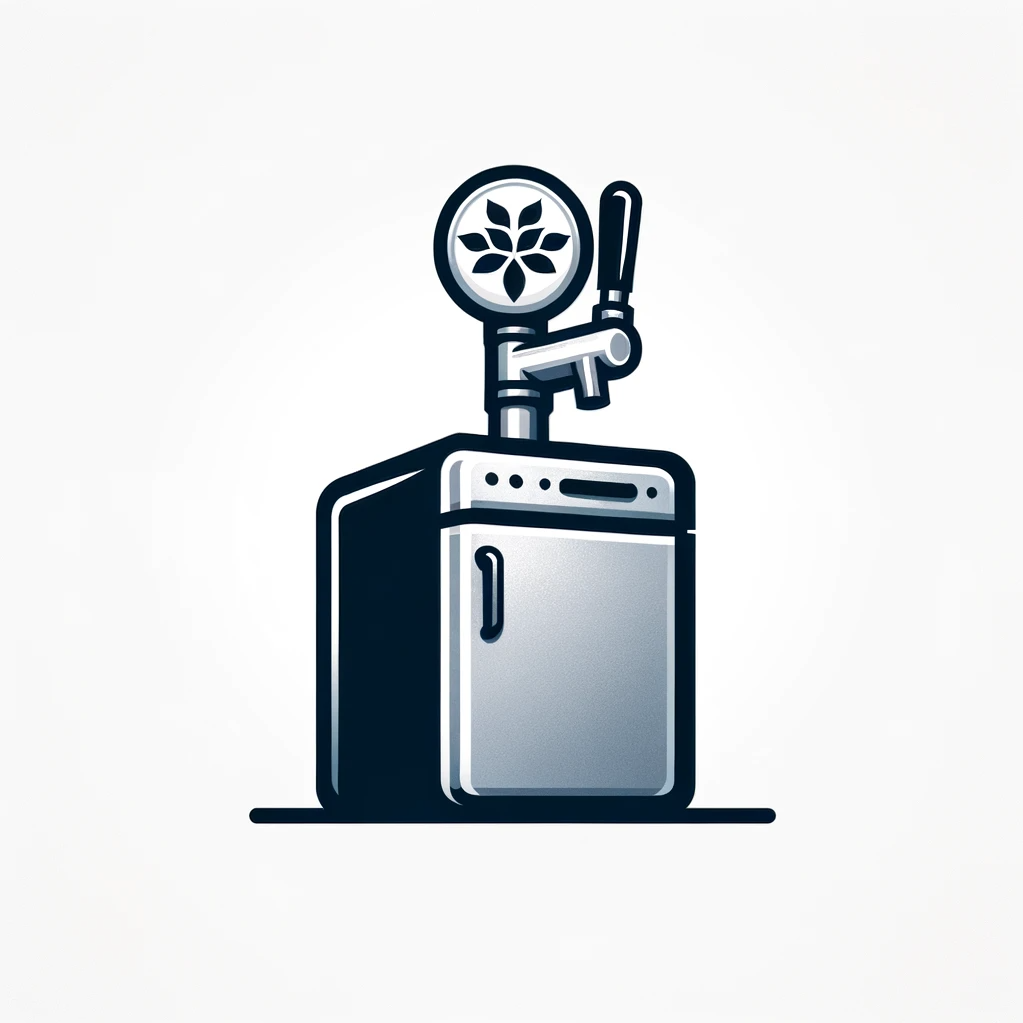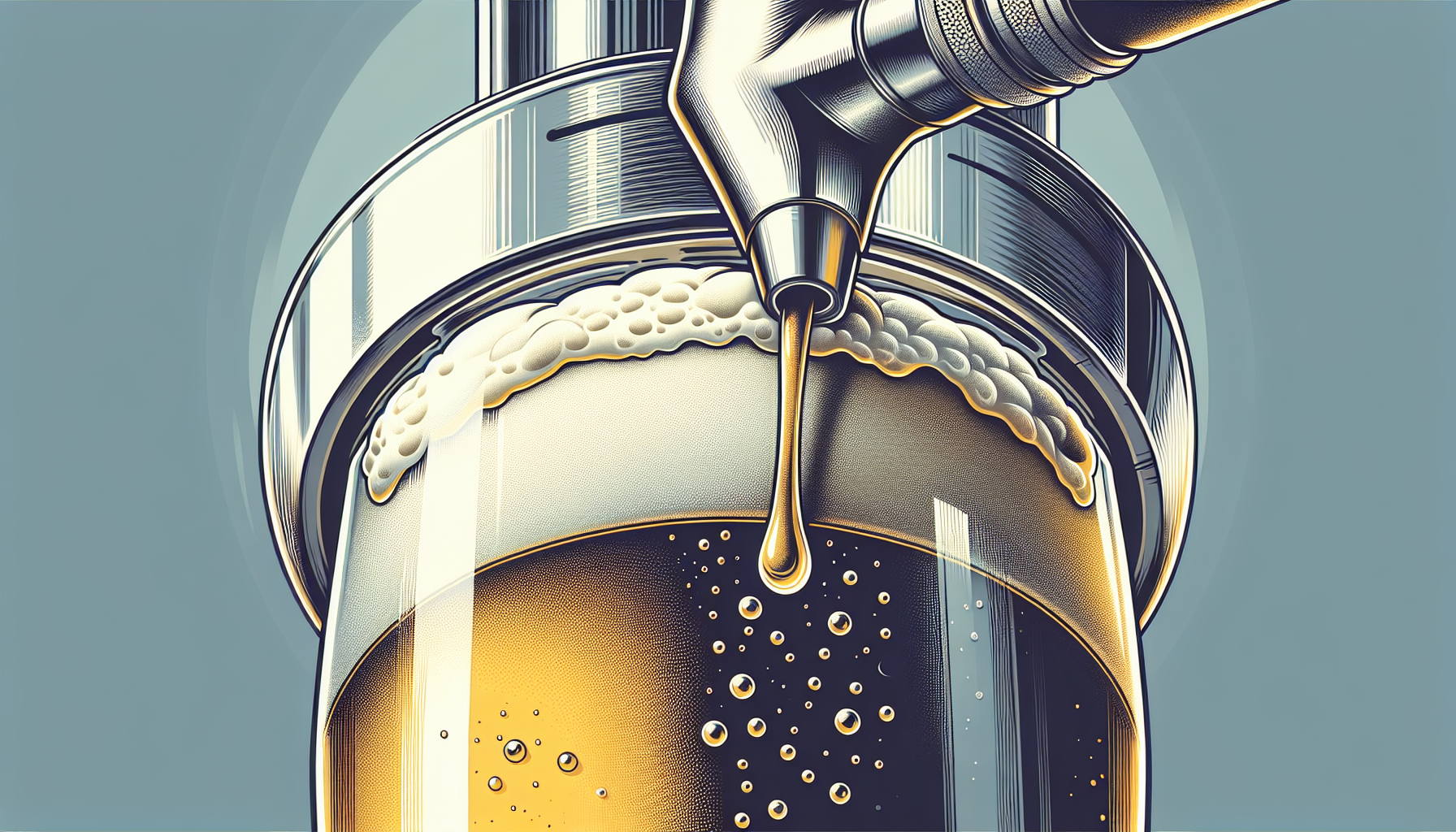Imagine never having to buy another case of beer again. Sounds appealing, doesn’t it? Well, that’s exactly what a kegerator promises to do. But the real question is, does investing in a kegerator truly save you money? In this article, we will explore the ins and outs of owning a kegerator and determine if it’s a cost-effective solution for all the beer enthusiasts out there. So sit back, grab a cold one, and let’s find out if a kegerator is the secret to keeping your bank account happier and your fridge fully stocked.
CHECK OUT MINI FRIDGES AND KEGERATORS ON AMAZON
Understanding Kegerators
What is a kegerator?
A kegerator is a specialized refrigerator designed to store and dispense a keg of beer. It provides a convenient and efficient way to serve draft beer at home or in commercial settings. With a kegerator, you can enjoy fresh and perfectly chilled beer straight from the tap.
How does a kegerator work?
A kegerator operates by keeping the keg inside its insulated chamber, maintaining the ideal temperature for beer storage. The beer is dispensed through a faucet connected to a tap line, which is connected to the keg. The kegerator uses a CO2 system to maintain carbonation in the beer, ensuring a perfect pour every time.
Different types of kegerators
There are various types of kegerators available to suit different needs and spaces. Some common types include:
-
Freestanding kegerators: These are standalone units designed to fit in any designated area in your home or business.
-
Built-in kegerators: These are integrated into existing cabinetry or counter space, giving a more seamless and customized look.
-
Outdoor kegerators: Built to withstand outdoor conditions, these kegerators are perfect for patio bars or outdoor entertainment areas.
-
Commercial kegerators: These are larger, more heavy-duty units designed for high-volume dispensing at bars, restaurants, or events.
CHECK OUT MINI FRIDGES AND KEGERATORS ON AMAZON
Initial Investment
Cost of purchasing a kegerator
The cost of purchasing a kegerator can vary depending on the size, features, and brand. A basic home kegerator can cost anywhere from $300 to $800, while more advanced models or commercial-grade kegerators can range from $1,000 to $5,000 or more. Additionally, built-in or outdoor kegerators may require additional installation costs.
Additional costs and accessories
Along with the initial purchase, there are some additional costs and accessories to consider. These include CO2 tanks and regulators, which need to be periodically refilled or replaced. Faucet upgrades, cleaning kits, and keg couplers are also common accessories that may be necessary. These costs should be factored into the overall investment.
Comparing Costs
Cost per ounce of beer
One of the main advantages of owning a kegerator is the potential cost savings. When comparing the cost per ounce of beer from a keg to bottled or canned beer, kegerators often come out ahead. Kegs generally offer a lower cost per ounce, especially when buying in larger quantities or opting for more affordable keg options.
Comparing keg prices to bottled or canned beer
When comparing the price of a keg to buying equivalent amounts of bottled or canned beer, kegerators can provide significant savings. Depending on the brand and type of beer, the cost per ounce can be significantly lower when purchasing a keg. This is particularly true for popular or craft beers that may be more expensive when bought in individual packaging.
Savings over time
Over time, the savings from owning a kegerator can add up. Regularly purchasing cases or six-packs of beer can become expensive, especially if you enjoy beer frequently or entertain guests often. With a kegerator, you have the ability to buy beer in bulk, reducing the overall cost per ounce and saving money in the long run.
Factors Affecting Savings
Frequency of beer consumption
The amount of beer you consume plays a significant role in determining your potential savings with a kegerator. If you’re someone who enjoys having a drink or two every day, having a kegerator can result in significant savings over time. On the other hand, if you only have an occasional beer, the savings may not be as pronounced.
Number of people drinking
The number of people in your household or the frequency of guests can impact your potential savings. If you frequently entertain large groups or have multiple beer drinkers in your home, a kegerator can offer greater savings by eliminating the need to buy multiple packs of beer for different preferences.
Types of beer preferred
The type of beer you prefer can also affect your savings. Craft beers and specialty brews are typically more expensive in individual servings than more mainstream options. If you enjoy these types of beers, owning a kegerator can provide substantial savings by allowing you to purchase kegs at a more affordable price per ounce.
Local beer prices
The price of beer in your local area should also be considered. Depending on where you live, the cost of beer at bars, liquor stores, or supermarkets can vary significantly. If you live in an area with higher beer costs, owning a kegerator can be even more advantageous in terms of savings.
Availability and variety
The availability and variety of beer options in your area can also impact your savings. If you have easy access to a wide selection of kegs with various styles, flavors, and brands, you can enjoy a greater range of options and potentially save money compared to buying individually packaged beers.
Maintenance and Upkeep
Cleaning and sanitizing
Regular cleaning and sanitizing is crucial for maintaining the quality and taste of the beer dispensed from your kegerator. This involves cleaning the beer lines, faucets, and other components to remove any buildup or contaminants. Cleaning kits specifically designed for kegerators are readily available and should be used according to the manufacturer’s instructions.
CO2 refills
CO2 is essential for maintaining carbonation in your keg, and the tank will need to be periodically refilled or replaced. The frequency of refills depends on the size of your tank, the number of kegs you go through, and the desired level of carbonation. CO2 refills can typically be obtained from local homebrew supply shops or beverage distributors.
Repairs and replacement parts
Like any appliance, kegerators may require repairs or replacement parts over time. This can include fixing issues with temperature control, leaky faucets, or malfunctioning CO2 systems. It’s important to consider the potential cost of repairs or replacement parts when assessing the overall investment of owning a kegerator.
Environmental Impact
Reduced packaging waste
One of the environmental benefits of owning a kegerator is the reduction in single-use packaging waste. By using kegs instead of individually packaged beers, you can significantly reduce the amount of bottles, cans, and related packaging materials that end up in landfills. This promotes sustainability and helps minimize your carbon footprint.
Energy consumption
Kegerators are designed to be energy-efficient, using less electricity compared to traditional refrigerators. This means you can enjoy the benefits of a kegerator without a significant increase in your energy bill. However, it’s important to choose an energy-efficient model to maximize these savings and minimize environmental impact.
Benefits Beyond Cost
Freshness and quality of beer
One of the key advantages of a kegerator is the ability to serve fresh draft beer at home. Bottled or canned beer can sometimes lose flavor and carbonation over time, but with a kegerator, you can enjoy beer at its peak freshness. Additionally, the consistent temperature control in a kegerator ensures that the quality of the beer remains high.
Convenience and accessibility
Having a kegerator in your home offers unparalleled convenience and accessibility. No more trips to the store to buy beer, no more storing cases in your fridge or pantry, and no more wasting time with bottle openers. With a kegerator, you can simply pull the tap and pour yourself a cold draft beer whenever you desire.
Enhanced social gatherings
A kegerator can become the focal point of social gatherings and parties. It encourages a more interactive and communal experience as guests can serve themselves and enjoy a variety of beers on tap. It also eliminates the need for guests to bring their own beverages, simplifying the hosting process and providing a unique and memorable experience.
Limitations and Considerations
Space requirements
Kegerators come in various sizes, so it’s important to consider the space available in your home or establishment. Freestanding kegerators typically require a dedicated area with proper ventilation, while built-in or outdoor kegerators may require specific dimensions and installation considerations. Ensure you have enough space to accommodate the kegerator and any additional equipment.
Possible beer waste
One potential limitation of owning a kegerator is the risk of beer waste. Unlike sealed bottles or cans, beer inside a keg is exposed to air and can lose carbonation over time if not consumed quickly enough. This is especially relevant if you don’t consume beer frequently or only have a small household. Properly managing the beer supply and monitoring consumption can help minimize waste.
Legal restrictions and regulations
It’s essential to be aware of any legal restrictions or regulations regarding the ownership and use of kegerators in your area. Some jurisdictions may have rules pertaining to homebrewing or the sale of draft beer. Additionally, certain establishments may require specific permits or licenses to operate a kegerator commercially. Ensure you comply with all applicable laws and regulations.
Alternatives to Kegerators
DIY setups
For those who enjoy DIY projects, building your own kegerator can be a fun and cost-effective alternative. This involves repurposing a standard refrigerator or chest freezer and installing the necessary components, such as taps, CO2 systems, and temperature controls. DIY kegerators allow for customization and can often be more budget-friendly.
Growler systems
Growlers are reusable containers typically made of glass or stainless steel that can be filled directly from tap lines at breweries, brewpubs, or beer shops. These systems allow you to bring draft beer home to enjoy. While growlers don’t provide the same level of convenience as a kegerator, they can be a good option for those who want draft beer occasionally without the commitment and maintenance of a kegerator.
Conclusion
Owning a kegerator can offer numerous benefits, including potential cost savings, the ability to enjoy fresh and quality draft beer, and enhanced convenience and accessibility. However, it’s essential to consider factors such as initial investment, maintenance requirements, and personal preferences when deciding if a kegerator is the right choice for you. By weighing the advantages and limitations, you can make an informed decision and ensure a satisfying beer-drinking experience.

